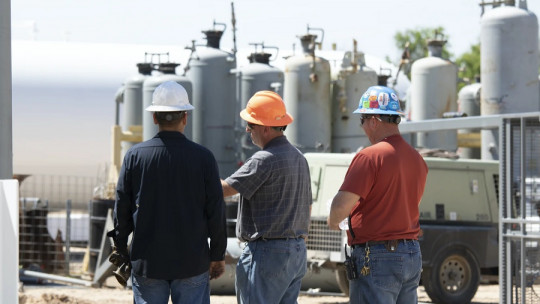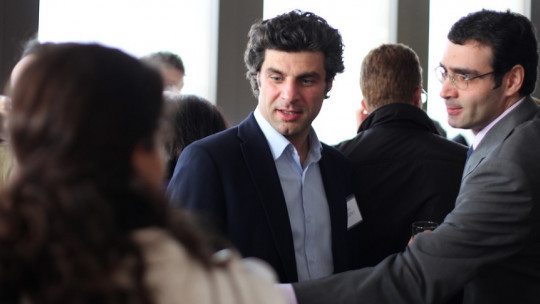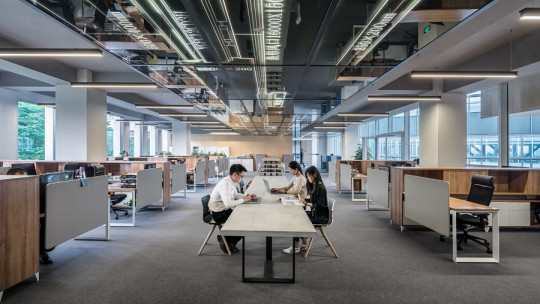Companies are made up of a set of different types of resources, but the people themselves are probably the most valuable.
In this article we will a tour of the characteristics of human capital, its implications and what differentiates it from the rest of the elements that make up each organization to see what makes it so special.
What is human capital?
Human capital is the group of people that make up an organization taking into account the skills, training and degree of efficiency in carrying out the tasks of each of them, as this is what brings quality to the work.
Therefore, we would be talking about one of the factors of production, which are generally conceived as three: land, labor and capital, human capital being a subcategory of the latter. It should not be confused with the work factor, which would be the activity of the tasks themselves.
This is a technical definition that has subsequently been simplified to refer to all of the company’s human resources. Business psychology, for its part, speaks of human capital as the value that all the people who make it up bring to the company , since they are the indispensable resource to achieve the objectives established by the organization. When we talk about educational centers, the value falls on the skills, knowledge and, ultimately, the talent that makes the tasks possible.
The conception of the term human capital corresponds to the American economists, Gary Becker and Theodore Schultz , and was developed in the 50s of the 20th century. In their studies, they concluded that this factor was what explained the economic improvement in societies, if we looked at its correlation with the educational level of all its individuals, hence they began to talk about investing in human capital, as well as that was done with other material resources.
These investments translate into greater economic growth through two different mechanisms. First, because the company’s production factors become more productive. Second, because by having more qualified personnel, production techniques are improved and therefore the company becomes more efficient when it comes to obtaining the products or services they market. Human capital became such an important concept that it has not stopped being studied since then.
Conditional monetary transfers
Proof of the importance that human capital has acquired are the conditional monetary transfer programs, or conditional transfer of resources (TCM or TCR, respectively). These are programs carried out by many countries in which a series of monetary resources are invested in economically disadvantaged people, in exchange for a series of obligations such as schooling or regular attendance at the medical center.
What is sought with the TCR is to increase the value of its human capital in the medium term, achieving a generation of more qualified workers with an education and skills that will allow them to achieve better jobs and therefore provide a differential value that will produce economic growth for themselves, for the company in which they work and, by extension, for the nation that in the first place moment he made said disbursement, making an investment that finally sees a return.
Conditional cash transfer programs are especially encouraged in Ibero-American countries , being a common measure in most of them. We can also find this mechanism for enhancing human capital in Asian countries, such as the Philippines, Indonesia, Cambodia or Bangladesh, among others. As for Africa, Egypt and Morocco would be the representatives of this policy. In the West it is not so common, but there are examples of TCR in powers such as the US or the United Kingdom.
The problem with these programs is that They are very dependent on the budgets made by each administration , so a change in the political landscape of a country can drastically end the transfers of conditional resources, as happens with so many other programs when there is a change of government to another with a tendency contrary to the one that existed previously. These types of situations reduce the effectiveness of this mechanism and therefore endanger the improvement of human capital.
Equations
At a technical level, in economic studies, there are a series of formulas to represent human capital and thus be able to analyze it through mathematical calculations.
One of them is the Cobb-Douglas production function In this equation, human capital is one of the key values to be able to make an estimate of the economic growth that a country will experience in the coming years, so these are extremely complex calculations in which human capital plays an important role. fundamental role.
On the other hand we find the Mincer equation, formulated by Jacob Mincer , another economist. In this case, Mincer created a mathematical expression to be able to estimate the level of income that a population will obtain based on the academic level achieved, which explains how the investment in human capital that we talked about before works. And it is foreseeable that a population educated to the highest levels will obtain much higher salaries in the future than one that is not.
Jacob Mincer himself, together with Haim Ofek, studied the effect of the depreciation of human capital, a phenomenon that both this and other production factors suffer, such as physical capital, which are the materials that a company has and that progressively wear out or become obsolete. In the case of people, something similar happens, since The knowledge acquired at each educational level also presents a depreciation rate as time progresses
This is due to the effect of forgetting, the updating of content in the field of study in which the individual operates, etc. To counteract the effect of this depreciation of human capital, what must be done is to constantly retrain to stay up to date with new technologies and knowledge. Although the effect of age is also an effect that causes depreciation and that, at a certain point, cannot be counteracted.
Indices used to measure it
To measure the human capital of different nations and be able to make comparisons between them, there are mainly two indices.
The first would be that of the Davos Forum, which each year reports on the value of human capital around the world The world index is the Global Human Capital Index, or GHCI, and it gives a score between 0 and 100 to each of the countries (more than one hundred participate in this study). In recent years, the country with the best indicator was Finland, while the worst score was for Mauritania.
On the other hand, we would find the World Bank human capital index, published by this entity for the first time in 2018 To construct this index, what is taken into account is the investment relative to the GDP of each country that has been allocated to educational and health services for children and youth. The result obtained is a value that goes from 0 to 1, and what it indicates is the difference (compared to 1, which would be the total) of the GDP that each country would have to invest so that both health and education were ideal.
To understand it better we will use a practical example. In this indicator, the HCI (Human Capital Index), Spain obtained 0.74 in the fiscal year of 2019, therefore occupying position number 32 in the general comparison with the rest of the countries. What this figure means is that Spain would have to invest 26% (obtained by subtracting 0.74 from 1) of GDP if it wanted health and educational services aimed at young people to be the best possible.
Although these are the two main indices, they are not the only ones. For example, We can also find the expected human capital, or expected human capital, an indicator devised by The Lancet , a leading UK medical journal. What this index provides is an estimated life expectancy for human capital, and it has been calculated from 1990 to 2016, for 195 different countries.
As was already the case with the GHCI, the nation with the most positive value in recent years has been Finland, providing a figure of 28.4. In contrast, Niger would be the country with the worst rate of all, obtaining only 1.6 years of life expectancy in human capital.









